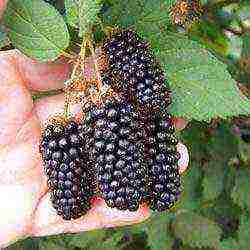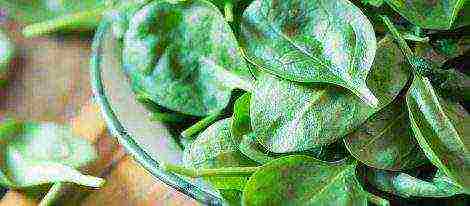Content
- 1 Varieties: what the species look like
- 2 Geranium properties
- 3 Growing and transplanting a flower
- 4 The most common diseases and pests
- 5 What is this flower?
- 6 Species names with descriptions and photos
- 6.1 Orange
- 6.2 Ice rose
- 6.3 Unique
- 6.4 Irida confetti
- 6.5 Mini diana
- 6.6 Diana Palmer
- 6.7 Natalie
- 6.8 Powder poof
- 6.9 Bornholm
- 6.10 Albina
- 6.11 Elmset
- 6.12 Dovepoint
- 6.13 Crown Princess Mary
- 6.14 Princess Sandra
- 6.15 Passat
- 6.16 Peppermint Twist
- 6.17 Varnish
- 6.18 Bronze butterfly
- 6.19 Magnus
- 6.20 Tsarskaya
- 6.21 Tamara
- 6.22 Red
- 6.23 Maverick white-pink
- 6.24 Tuscany
- 6.25 Apple blossom
- 6.26 Black velvet
- 6.27 Indoor hybrids
- 6.28 Scarlet
- 6.29 Madam
- 6.30 Fisher Apleblossom
- 6.31 Blue
- 6.32 Miniature varieties
- 7 Care rules
Geranium is an unpretentious plant that fits perfectly into the design of flower beds or window sills. All kinds of colors attract both landscape designers and ordinary housewives who dream of giving a room a special atmosphere. Consider the best types of pelargonium.
There are a lot of geranium varieties. Professional gardeners have about 45 species.
Varieties: what the species look like
Modern landscape designers use the flower in question as in closed buildings, so in gardens or parks... In addition to its attractive appearance and unpretentiousness in care, geranium has another significant advantage: resistance to cold and scorching sun.
The plant is often used to decorate outdoor areas.
Plant species are distinguished by growing conditions, flowering time and height. It is worth considering in more detail the most popular varietal types.
Zonal variety
Such a flower is the most popular plant on the windowsills of housewives. He unpretentious, often blooms and is not afraid of temperature changes. The flowers are usually bright in color and grow in inflorescences. The leaves appear rounded, slightly wavy at the edges, and are dark red or brown in color.
It can bloom all year round, but this requires suitable conditions for it. It is worth considering one point: the smaller the pot in which the plant is planted, the more abundantly it will bloom.
Royal
The kalachik of the royal species has a large number of colors and rather large flowers with a diameter of up to 15 centimeters. The plant is different dark specks or streaks on double, wavy or corrugated petals:
| Height | can reach up to 50 centimeters |
| Bloom | it blooms at the age of two for 4 months |
| Peculiarities | the most capricious in care |
You can read more about the plant in the article on caring for royal geraniums at home.
Fragrant
The name of the variety indicates that the plant has a large number of aromas - rose, strawberry, lemon. The scent becomes audible at the slightest touch of the leaves.
Inflorescences here too smallcolored pink or purple.
The oil, which is obtained from scented oil, is widely used in folk medicine, cosmetology and culinary arts.
Angel
The main difference between this type is considered to be a kind of flowers that resemble pansies. The plant is not demanding to care for, it grows as a bush and reaches 50 centimeters in height.
In the event that the flower is not trimmed correctly or out of time, then the shape of the ball will become falling.
Blooms in summer. The bloom is so abundant that the flowers cover all the foliage. The flowers are very bright.
Unique
The subspecies in question was bred by breeders by crossing several types of geraniums. The leaves of the unique are dissected and dark colored. From them comes aroma of culinary spices.
The inflorescences of this ornamental plant are red, and their center is white. Less commonly, you can find white or pink flowers. A ball with spotted flowers is considered unique.
Succulent
This plant has a branched and curved stem, lignified at the bottom.
Sometimes you can come across geraniums, the stem of which has thorns. Such a roll is ideal for creating various designs.
Lemon
Florists call this plant non-flowering, for flowering is quite rare... Its leaves are unusual, dissected, so it very often grows on the windowsills of private sectors and apartments.
The flower grows up to 1 meter in height. If you touch its leaf, then it begins to smell like lemon.
Varieties the plant in question lots of, all of them cannot be enumerated. Each flower is unique, beautiful and requires individual care.
Geranium properties
The Geraniev family, which includes a large number of flowers from Europe, Asia and Africa, has been attracting people for many years. The beneficial properties of geraniums were known even in Ancient Greece.
What medicinal properties does
For the treatment of various diseases, it is customary for the people to use fragrant or pink geranium.
These plants are considered a real find, because have a positive effect on the body:
- Fights bacteria and viruses. Due to the fact that geranium secretes an essential oil, it helps to kill harmful microorganisms. For example, staphylococcus aureus.
- Has an antiseptic effect.
- Stops bleeding.
- Relieves pain.
- Heals wounds.
- Tones up the skin.
- Relieves puffiness.
- Helps cope with diabetes.
- Supports the functioning of the gastrointestinal tract.
- Regulates the functioning of the liver and kidneys.
- Strengthens the heart.
All these properties make geranium a unique plant. This natural storehouse is increasingly found in the apartments of housewives.
What is pelargonium oil for?
Experts have proven that geranium oil:
- promotes brain activity
- stimulates normal physical activity
- restores the nervous system
- relieves a person of unreasonable fear
- lowers blood sugar
- prevents the spread of tumor cells
In addition to all of the above, geranium oil has a few more useful properties... They are as follows:
- Removal of spasms from blood vessels.
- Elimination of tachycardia.
- Improving the work of the heart.
- Pain relief and removal of puffiness.
- Anti-inflammatory effect.
- Destruction of herpes and fungus.
- Slowing down the aging of the body.
- Decrease in blood clotting.
- Strengthening immunity.
- The oil is used in the fight against various insects and parasites.
- Eliminates skin flaking, acne and blackheads.
- Treatment of eczema, burns.
The oil is widely used in folk medicine, cosmetology, and cooking. On its basis, a large number of healing ointments, regenerating creams, tonics have been created.
We strongly recommend that you consult your doctor before proceeding with self-medication.
What are the signs associated with geraniums
Walks among the people will take a lotthat are associated with the ball. It is worth considering in more detail each of them.
- If a geranium with pink flowers bloomed in the house, then someone in the family will surely fall in love.
- The flower is pink often saves crumbling families... It protects against love spells and quarrels that a rival can bring.
- White can help spouses who cannot conceive a child. The plant is recommended to be placed near the matrimonial bed.
- Red geranium protects the home from ill-wishers.
- Dried flowers symbolize material wealth and attract money to the home. Experts advise putting a geranium herbarium in your wallet.
- In educational institutions, a kalachik is placed in order to help improve relations between students and teachers. Besides, contributes to the high performance of children.
Improving academic performance is a great excuse to put your pet in school if no one has allergies.
- In the workplace, the plant prevents the emergence of conflicts in the team. It is customary to put it in those places where the management receives customers and business partners.
Such signs have been tested over the years. This suggests that the pet is useful not only in medicine, but also in everyday life.
Growing and transplanting a flower
If they planted pelargonium in the apartment, then the hostess must take into account several basic points for caring for the flower.
The plant needs proper lighting, timely watering, a certain temperature, pinching and pruning. It is forbidden to spray it.
Growing order
Kalachik prefers to grow on a light and warm windowsill, to be at room temperature. With insufficient light the plant does not bloom well or dull and sparse flowers appear on it.
Indoors, geraniums should not stand in direct sunlight, but outdoors, the flower tolerates sunny weather.
Watering should be done when the soil in the pot dries up. Excessive moisture provokes rotting of the root system and weakening of the leaves.
In winter, you need a kalachik water very rarely... It is better to achieve a lack of water than an excess of it.
The soil in the pot should be nutritious, it should contain peat and sand. Drainage should be placed at the bottom of the pot and periodically loosened the ground.
Pinching is carried out in order to grow a lush and beautiful plant. During the procedure, which is performed in late February or early March, you need to remove the growth point.
During the growth of the ball, it should feed constantly... It is better to do this with the help of liquid fertilizers, which contain nitrogen and a lot of phosphorus.
How to transplant and propagate
Geranium propagation is usually carried out in two ways. They are as follows:
Cuttings
Experts cut cuttings with 5 leaves from the upper shoots and leave them in the air for a couple of hours. After a certain time sprinkle the cut with a product to accelerate the growth of the root system and cuttings are planted in the soil.
Cuttings are considered a reliable breeding method.
The plant takes root after 1-1.5 months, during which it is better to spray the flower rather than water it. When the ball is completely rooted, it is seated in pots.
Seeds
This method is almost always used by breeders. The seeds are planted in small pots, and after the seedlings have come out, they are transplanted into larger containers. Blooms such a flower after 12 months.
Geraniums are transplanted at any time of the year, because there is no specific time frame for this procedure. In order to transplant a kalachik, you need to prepare a pot, soil, drainage and a garden watering can. Sequencing:
- the plant is taken out of the old container along with the ground
- carefully examine its roots
- cut off that part of them where there is decay or illness
- the flower is placed in a new pot, the gaps are covered with soil, watered
- put in a dark place for a week
- in 7 days put in the right place
The most common diseases and pests
Diseases of pelargonium are often found in the wrong content. In order to prevent the death of the plant, treatment should be carried out.
At the slightest change in the appearance of the ball, it is worth consulting with a specialist and describing the problem.
If the flower leaves turn yellow, then it lacks moisture. The plant withers completely when the soil is waterlogged.
If pelargonium freezes, then the edges of its leaves turn red. In winter, the pot should not touch the glass on the window.
If you hit a flower blackleg, then his stem darkens. This happens due to excessive soil moisture. In this case, you will have to get rid of the plant.
If the stem is bare and the leaves fall off, then the kalachik lacks daylight.
If the leaves appear mold gray, then this indicates the presence of a fungal disease. The flower must be treated with a fungicide.
Gray mold
According to statistics, pink, royal and zonal geraniums are more common among gardeners. This is due to the extraordinary beauty of the plant and its unpretentious care.
 Geranium on the windowsill is a classic of the genre in home crop production. And if you think that this flower is too boring and suitable only for grandmother's chest of drawers, then you are deeply mistaken. Modern varieties of pelargonium may be completely different from the bored meter "kalachiki". And the flowers, and the shape of the leaves, and even their smell can be completely different. Interesting? Then let's try to figure out what an ordinary geranium can be.
Geranium on the windowsill is a classic of the genre in home crop production. And if you think that this flower is too boring and suitable only for grandmother's chest of drawers, then you are deeply mistaken. Modern varieties of pelargonium may be completely different from the bored meter "kalachiki". And the flowers, and the shape of the leaves, and even their smell can be completely different. Interesting? Then let's try to figure out what an ordinary geranium can be.
Variety of pelargonium species
The species and varietal diversity of pelargonium does not allow the adoption of a single classification of this plant. But the most common division into 6 types:
- zonal pelargoniums;
- ivy pelargoniums (ampelous);
- royal pelargoniums;
- pelargonium angels;
- unique;
- fragrant pelargoniums.
Zonal pelargoniums - Zonal pelargoniums
The most widespread species, represented by the largest number of varieties (over 75 thousand). This pelargonium received the designation “zonal” because on its leaf plates there is a “zone” painted in a different color - usually in the form of a ring or a color spot in the center. With a lack of lighting, for example, in winter, the "zone" disappears, and in the spring it reappears.
 Zonal Pelargonium Orbit Scarlet Eye in balcony boxes
Zonal Pelargonium Orbit Scarlet Eye in balcony boxes
Pelargonium zonal is a densely leafy, erect bush with flowers collected in umbrella brushes. Her leaves are pubescent, have a specific smell.
They began to cultivate zonal pelargonium in culture in 1710. These inhabitants of the windowsills were tall and represented a long watchtower with small inflorescences. Later, breeders took up the development of shorter varieties that could be formed by pinching. The first such varieties appeared in 1844.
By the number of flower petals, zonal pelargoniums are divided into:
- non-double (Single Zonal pelargoniums) - the flower consists of 5 petals;
- semi-double (Semi-Double Pelargoium Zonale) - from 6-8 petals;
- terry (Double Zonal pelargoniums) - more than 8 petals.
Among the mass of varieties of zonal pelargoniums, separate subgroups are distinguished:
1. Rosaceae (Rose-bud Zonal pelargoniums)
Zonal pelargonium with flowers very similar to roses. The first mention of the subgroup appeared in 1876, in an article in the Journal of the Royal Horticultural Society. The most famous variety is Appleblossum Rosebud.
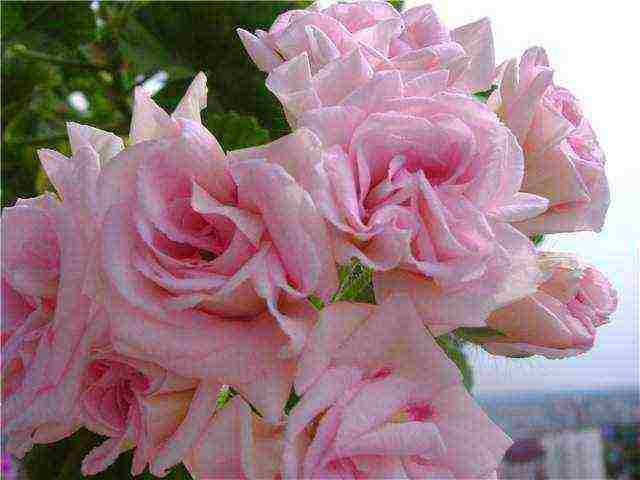 Zonal Pelargonium from the group of rosebud varieties - Millfield Rose
Zonal Pelargonium from the group of rosebud varieties - Millfield Rose
2. Tulip (Tulipe-bud pelargonium)
Pelargonium flowers resemble unopened tulip buds with 6-9 petals. The subgroup is characterized by dense flowering in the form of a bunch. Tulip pelargoniums were obtained in 1966 by the American Andrea family of breeders in Boston. It is believed that the ancestor of the subgroup was the sport (mutation) of Pelargonium Fiat, to the appearance of which varietal "tulips" sometimes return.
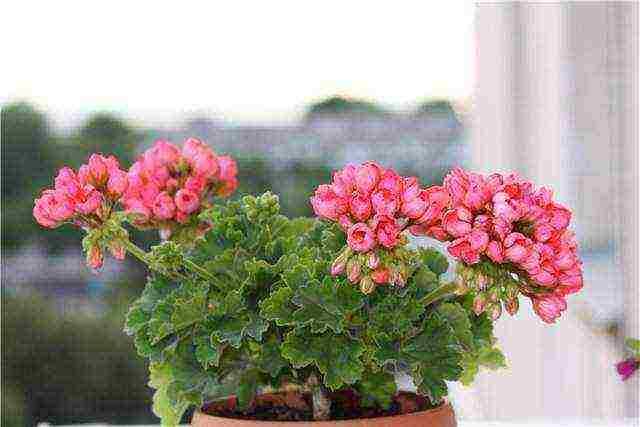 Tulip Pelargonium Patricia Andrea
Tulip Pelargonium Patricia Andrea
3. Carnation (Carnation Pelargonium)
Flowers of this subgroup resemble garden carnation flowers. They are large enough with carved petals.
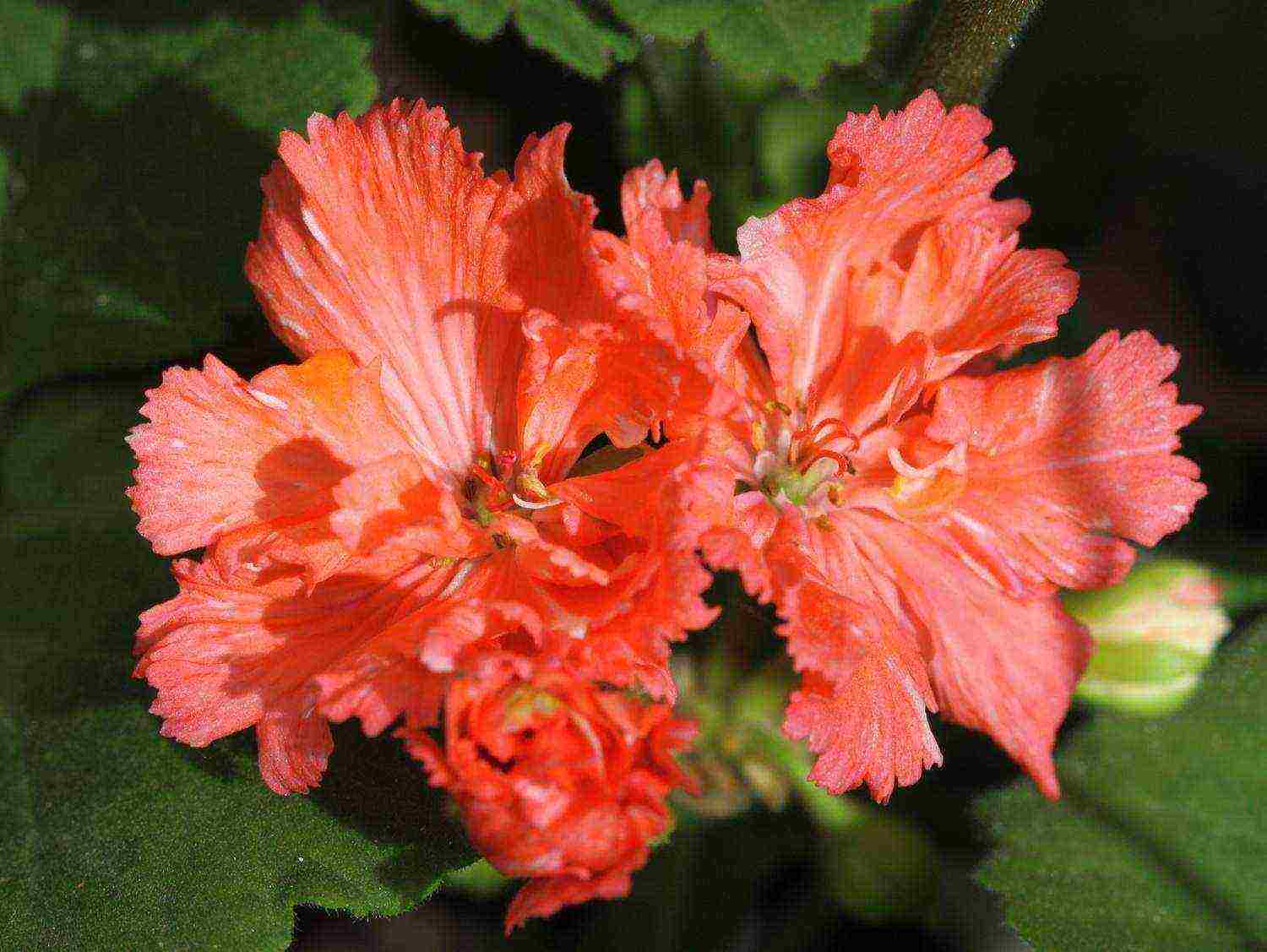 Clove Pelargonium - Diana Palmer cultivar
Clove Pelargonium - Diana Palmer cultivar
4. Stellar (Stellar Zonal Pelargonium)
In these zonal pelargoniums, both leaves and flowers have a sharp, angular, so-called "star" shape. Usually, the flower has two upper petals that are more elongated and narrower than the rest. For the first time, star-shaped pelargoniums appeared on the windowsills of amateur flower growers in the early 1950s. in Australia.
 Star Pelargonium St. Elmos fire
Star Pelargonium St. Elmos fire
5. Cactus (Cactus-flowered Zonal pelargoniums)
A very rare subgroup of pelargonium, characterized by long, curled or curled flower petals. They often look "disheveled" or like cactus dahlia flowers. The cactus group has been known since the end of the 19th century, now most of the varietal assortment has been lost.
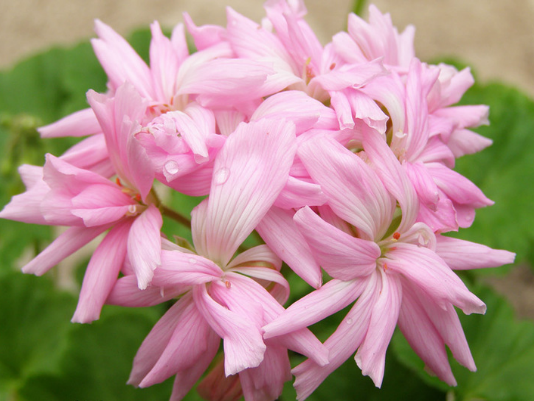 Pelargonium cactus Mrs. Salter bevis
Pelargonium cactus Mrs. Salter bevis
6. "Deacons" (Deacon)
The first "Deacons" arose from the crossing of the Orion zonal miniature and the Blue Peter ivy-leaved pelargonium. Breeder - Stanley Stringer. New varieties of geraniums were presented by him at the "Flower Show" in Chelsea in 1970. Features of this subgroup - compact, miniature bush, abundant flowering. The flowers are red, orange or pink in different shades.
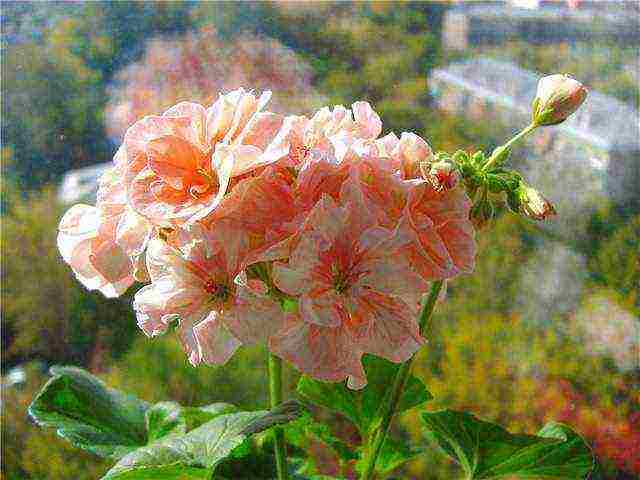 Zonal pelargonium of the "Deacons" group, variety Deacon Birthday
Zonal pelargonium of the "Deacons" group, variety Deacon Birthday
Pelargonium ivy - ampelous plants with hanging or creeping shoots 25-100 cm long. They are very popular when decorating balconies and loggias, although they can also be used outdoors as ground covers.
Flowers of ampelous pelargonium can be of any shape: non-double, double, rosebud. Their colors are quite extensive: from snow-white to wine-burgundy, almost black.
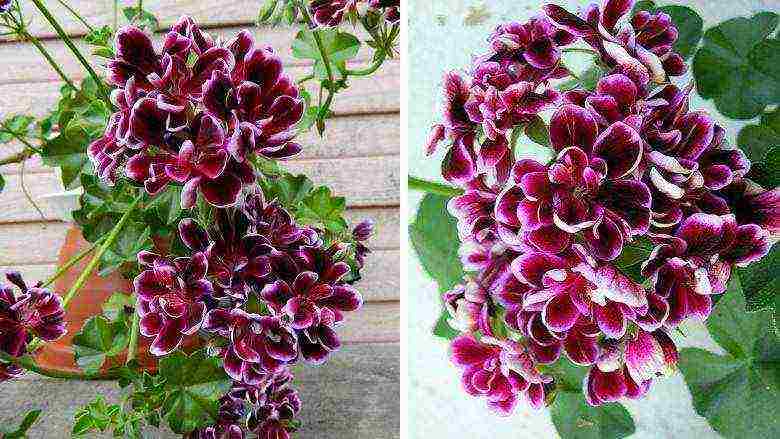 Pelargonium ivy Bonito
Pelargonium ivy Bonito
The leaves of the ampelous geranium are smooth, similar to ivy leaves (hence the name of the group). In most varieties, the leaves are quite tough and dense.
Geranium ampelous has been cultivated in culture since the beginning of the 18th century, but it received wide recognition only in the middle of the 19th century. From that moment, breeders began to take an active interest in this plant, and in 1877 they released the first terry ampelous pelargonium of the Konig Albert variety.
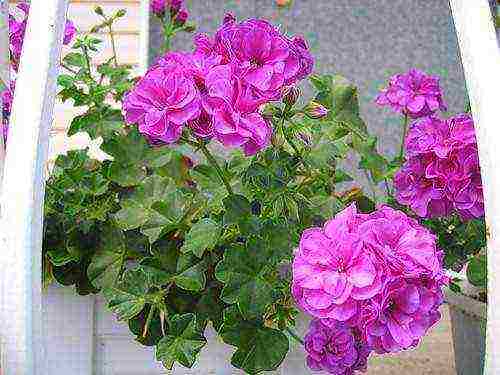 Geranium ampelous Pac Blue Sybil Royal Pelargoniums - Regal pelargoniums
Geranium ampelous Pac Blue Sybil Royal Pelargoniums - Regal pelargoniums
Royal Pelargoniums are powerful bushy plants, reaching a height of 50 cm. The flowers are large, up to 4-7 cm in diameter. The edges of the petals are often corrugated and fringed. Their color is never uniform due to the obligatory presence of dark spots or stripes along the veins. Many varieties of royal geraniums have darker upper petals than lower ones. The predominant colors are white, burgundy, dark pink, purple.
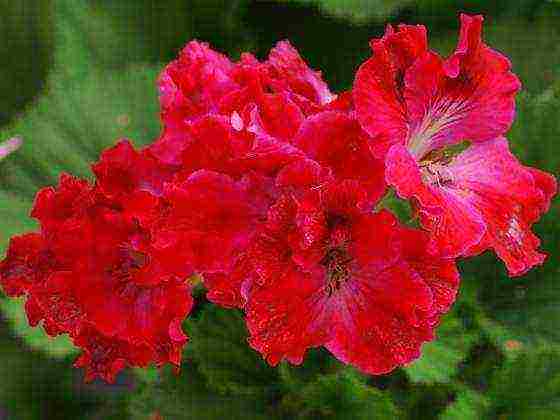 Royal Pelargonium Tunia's Perfecta
Royal Pelargonium Tunia's Perfecta
The royal geranium has broad, serrated leaves. They resemble maple leaves in shape, but with smaller and more frequent "teeth".
By their nature, royal geraniums are more capricious than other groups. The period of its flowering is no more than 3-4 months (for comparison: zonal pelargonium with good illumination can bloom all year round, without stopping) and then only with a properly arranged period of winter dormancy. In order for the budding to occur, royal geraniums should be kept at a temperature of 10-12 ° C in winter.
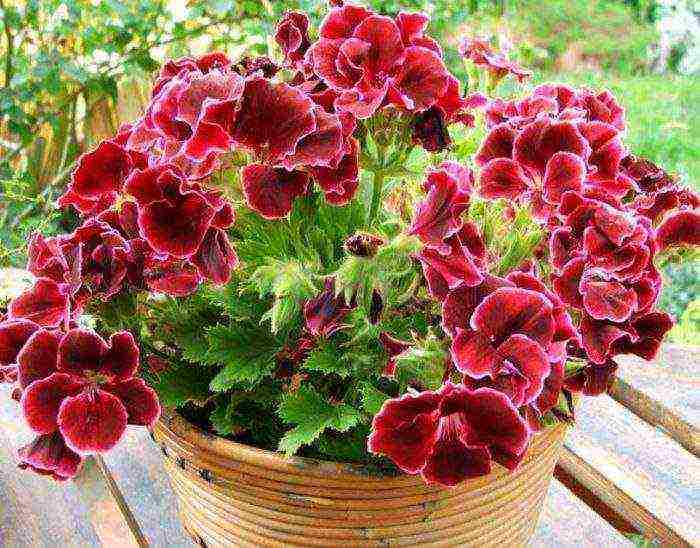 In order for the royal pelargonium to bloom, it needs 2-3 months of cool wintering
In order for the royal pelargonium to bloom, it needs 2-3 months of cool wintering
Many growers believe that "Angels" belong to the variety series of royal pelargoniums. But this is not the case. The first true "Angels" were obtained by the English florist Langley Smith by crossing the royal and curly pelargonium. It happened in the 1930s. Later, new varieties of Pelargonium "Angels" were bred in the process of hybridization within the group itself.
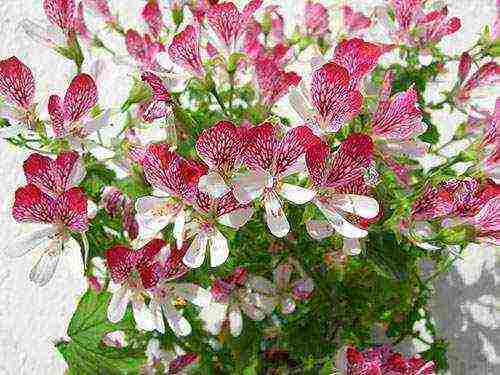 Pelargonium "Angel" - grade Eskay Saar
Pelargonium "Angel" - grade Eskay Saar
The "Angels" differ from the royal pelargoniums by the smaller size of leaves and flowers (diameter 1-2 cm). The type of growth of the "queens" is vertical, while the "angels" form ampelous bushes.
"Angels" are more persistent and unpretentious than varieties of royal geraniums. They grow fast, need a lot of light and tolerate dry conditions well.
Pelargoniums "Unique" - Unique pelargoniums
"Unicums" - an old group of pelargoniums, cultivated since the 60s of the 18th century. It was obtained by crossing the royal and brilliant (P. fulgidum) pelargonium. The first variety was named Old Unique.Subsequently, all representatives of the group were united under the common name Unique pelargoniums.
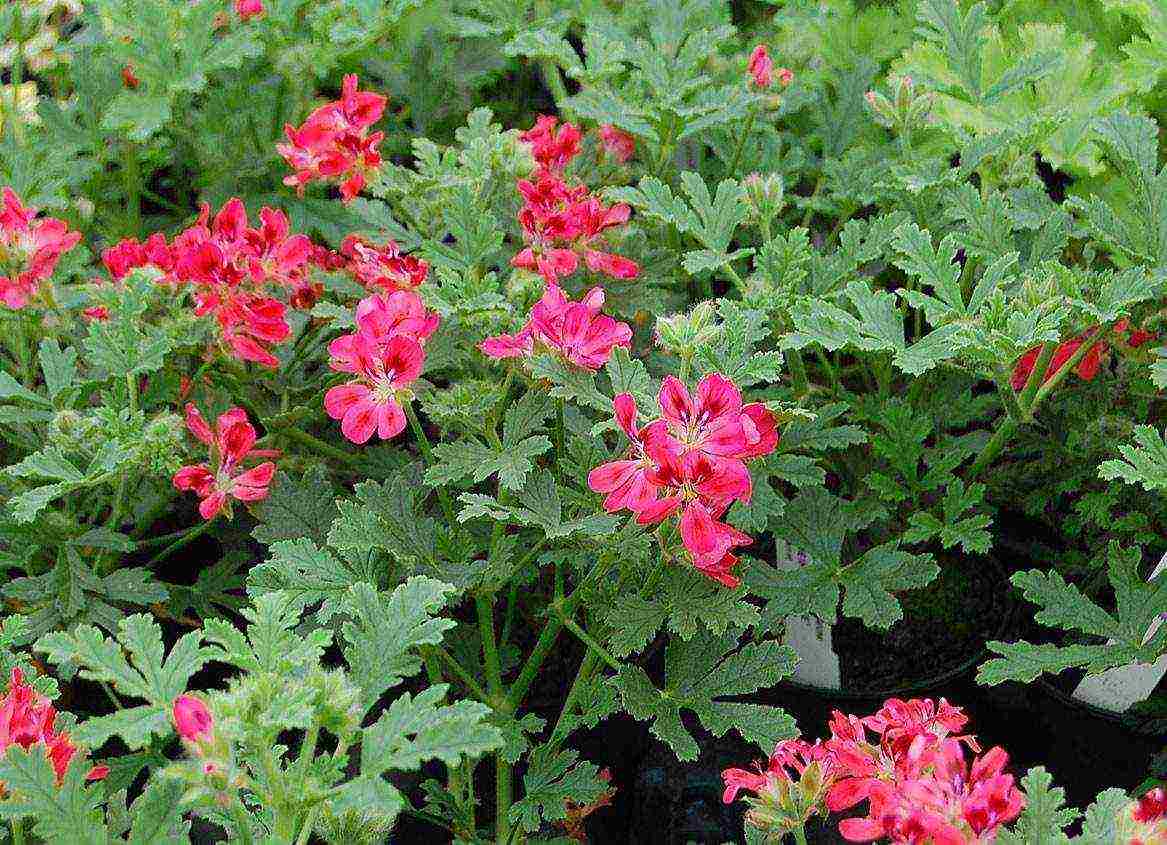 Pelargonium "Unique" - Robin's Unique
Pelargonium "Unique" - Robin's Unique
Flowers "Unicums" are similar to the flowers of royal pelargonium, but smaller in size. Leaves are dissected, sometimes with a fragrant smell. For example, the leaves of Paton's Unique have a sweet, peachy aroma.
During the Victorian era, Unicums were very popular as garden plants. Plants are rather large and tall. To bloom, their growth should be 40-50 cm. They bush poorly on their own, pinching or pruning is required.
Scented-leaved pelargoniums
Fragrant geraniums form a group of varieties, the leaves of which exude aromas of different shades.
Most of the "fragrant" in appearance is plain, their flowers are small, simple, most often pink or white. Leaves are palmate-lobed, with uneven angular or wavy edges. The plant forms a branched, loose bush that grows up to 1 m in height.
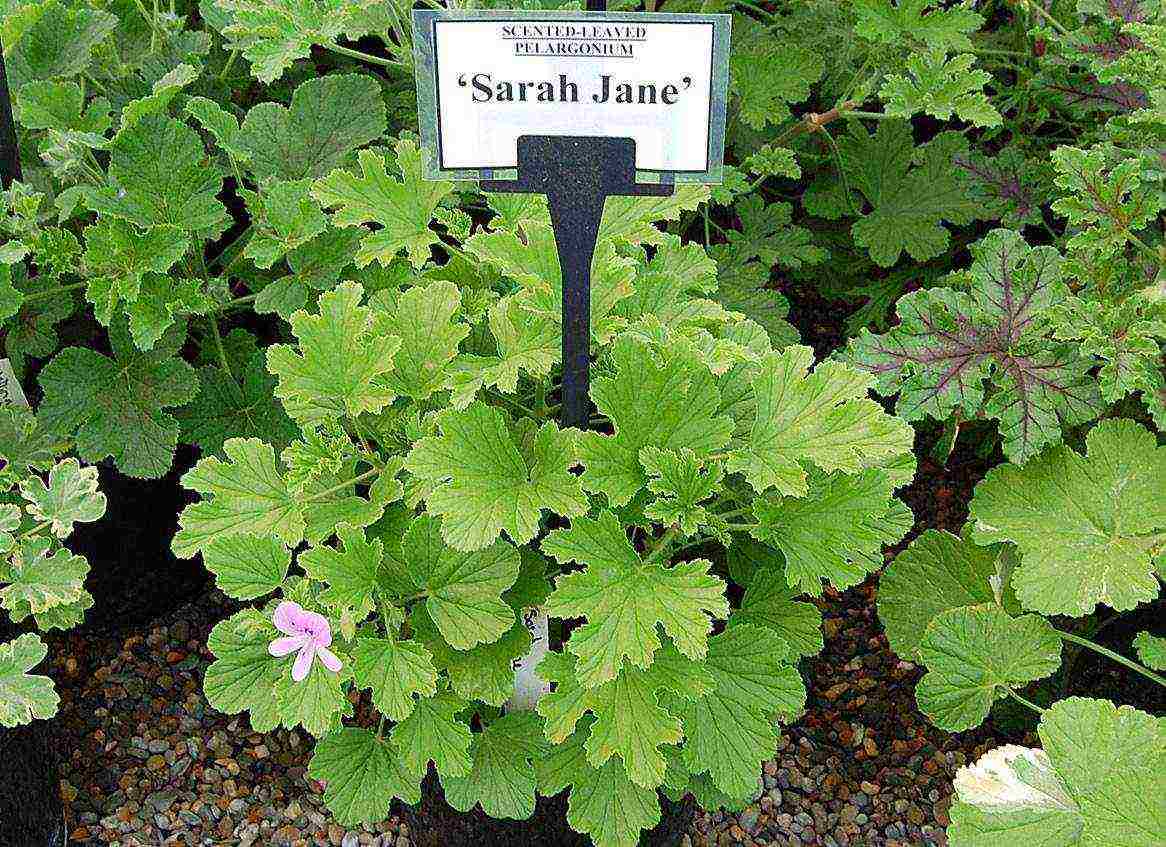 Sarah Jane fragrant geranium has a light citrus aroma
Sarah Jane fragrant geranium has a light citrus aroma
Scented geraniums are grown for their scent. Their leaves can smell like pineapple, peach, apple, verbena, grapefruit, nutmeg, oriental spices, roses, pine needles, wormwood, mint, etc.
Choose varieties and flavors:
- Islington Peppermint - pure mint flavor, no impurities
- Mabel Gray - strong and distinct lemon scent
- Brilliantine - a perfumery scent similar to cologne
- Fruity - sweet fruity scent
- Orange Fizz - Strongest Lemon Peel Flavor
- Candy Dancer - rose scent
- P.grossularioides - sweet, confectionery smell with hints of coconut
- p. odoratissimum - apple flavor
- Lady Plymouth - smells like menthol
- Gemstone - delicate lemon balm scent
- Orsett - pine scent (juniper, cypress)
- Clorinda - bright scent of spruce needles
- Fragran - clear scent of wormwood
- Staghorn Oak - strong forest scent
- Godfrey's Pride - "perfume" with notes of pine, spices and mint
- Fair Ellen - "forest", woody scent
- Fernleaf - pine needles scent
- p. Moliconum - Smells like pineapple
Most of the fragrant geraniums appeared in the process of crossing the species pelargonium. Although, some of them themselves are specific (for example, p. Odoratissimum - the most fragrant pelargonium).
In the 18th century, fragrant geranium was used in wealthy homes as a natural air freshener, "perfume" on the windowsill. Until now, this plant is very popular among amateur flower growers, private collectors.
What is this flower?
Pelargonium is a herbaceous semi-shrub flower. There are already more than 400 varietal varieties around the world. The name comes from the shape of the fruit, which was similar to a crane's beak. The first species were identified in Africa. A pleasant smell and neatness have been loved since ancient times, and after that they began to appear in every home. Popularity has appeared due to active growth and unpretentious care. In warm circles, the plant lives in the garden, as the height can reach large sizes.
Important! Do not leave the plant in the shade. When purchasing a flower, select a sunny and warm place for it in advance.
Species names with descriptions and photos
There are a huge number of varieties in pelargonium and the classification of some species is still uncertain. Let's move on to the most famous plants that can be found in every person in the house.
Orange
Orange pelargonium grows up to 35 cm in height. Extraordinary look with a peach cap on each bud and a greenish tint around the edge. With good care for 4 seasons, it changes 240 inflorescences. Provides a pleasant view of the balcony. Does not require increased attention to itself. Prefers semi-shaded areas. Watering should be abundant, a little less in winter. In summer, it is best to take it out into the fresh air. You can plant seeds in any weather.
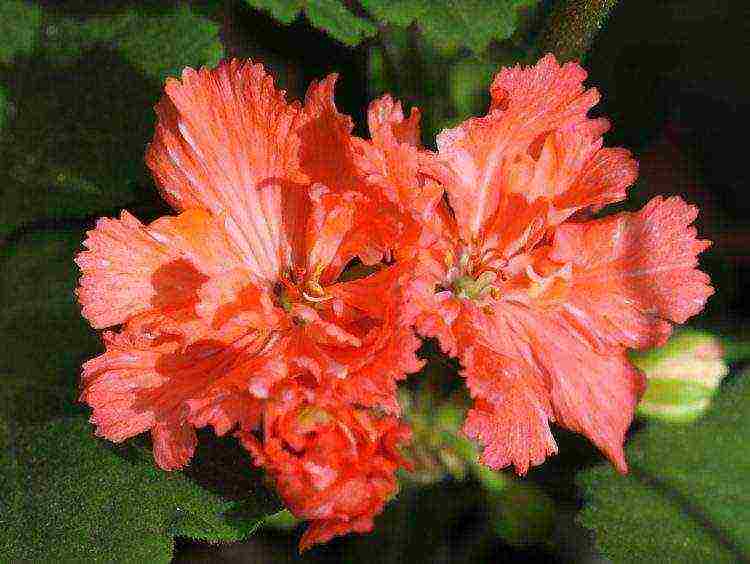
Ice rose
Ivy-leaved pelargonium is white. The foliage is medium in size, dark green in color. Compact plant. It does not grow quickly, but the buds of this variety are worth it. The flowers grow in large sizes up to 6 cm, the shape is folded in the form of a rose. If you hold the plant in the sun for a bit, you can achieve a slight lilac hue.
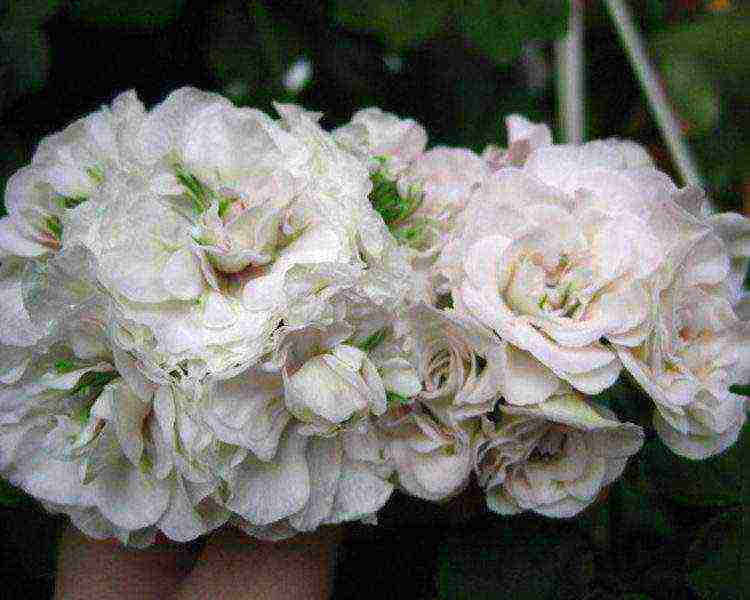
Unique
It differs from all the others, because even the origin of this plant is still unclear. The species is not included in any classification, which is why it is named unique.Its foliage belongs to dissected leaves. The aroma is spicy, without too much harshness. The small flowers are similar to the feather of a bird. Plants can have one or two-colored foliage. The variety is tall. The peak of popularity of the unique took place at the end of the 19th century.
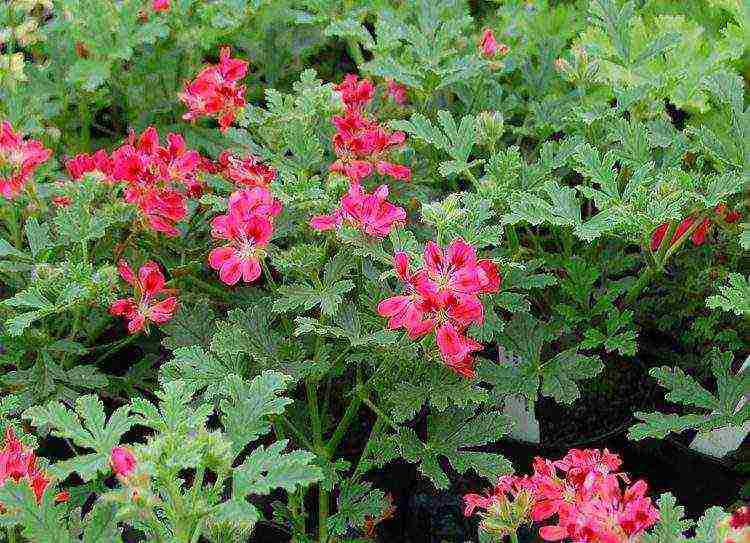
Irida confetti
Refers to zonal pelargonium. Their flowers are whitish with a pinkish tint in the middle. Small foliage. In a pot it looks impressive and without unnecessary flaws. It takes on a brighter tone in the sun. And in winter it requires special care and feeding.

Mini diana
Miniature golden-leaved pelargonium. Belongs to the zonal group. Despite the small size, the flowers are large, white-pink in color, on which there is a pleasant golden tint. The leaves are semi-double with a light green tint. Each leaf has a bright brown area. Blooms at an accelerated rate. Not whimsical. In a small pot, the flower looks compact and fluffy.
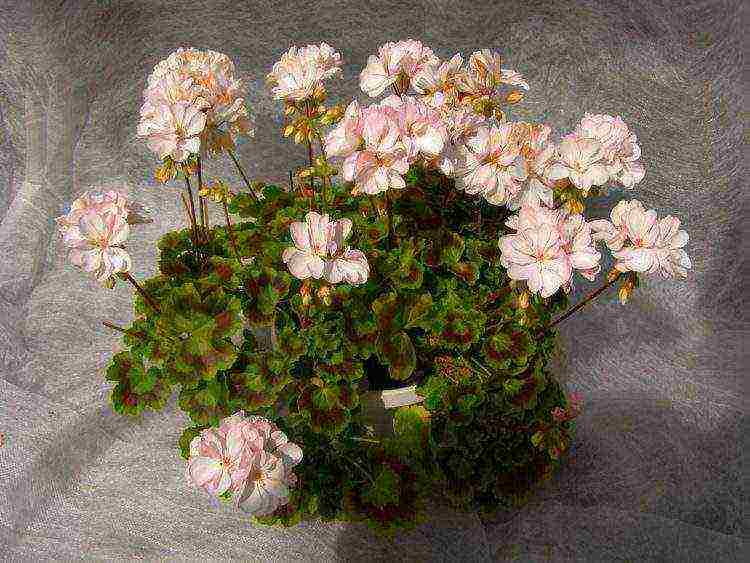
Diana Palmer
Zonal pelargonium. The petals are wavy with serrated edges in the shape of a carnation. Light shading. A spectacular bush, not whimsical in bloom. Has a pastel orange tone. In order for a flower to sprout, it needs pruning. It bushes well, looks large and grows. Leaves are compact. Inflorescences grow up to 5 cm. Quite a well-known variety. Mostly good flowering occurs in the summer. This plant needs feeding.
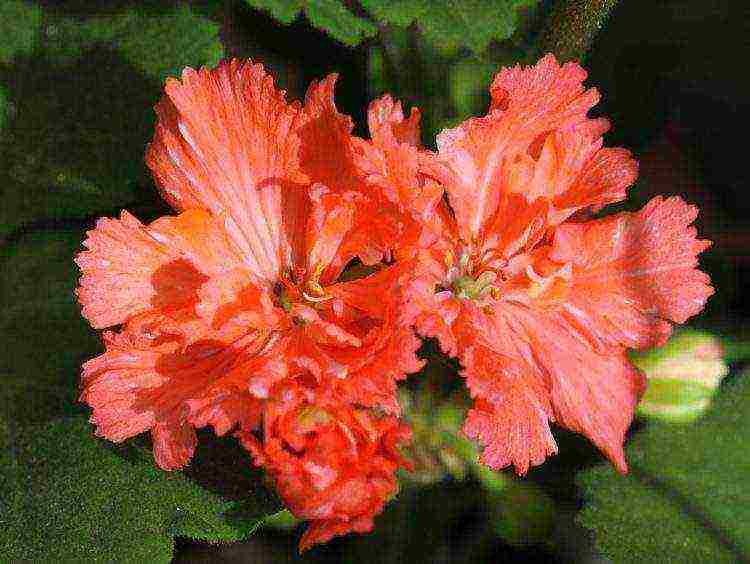
Natalie
Small semi-double species pelargonium. The first flowers give a size of 4 cm. Grows in large caps. The bush is graceful, compact, but rather moody. Not very tall. After pruning, the sprouts do not give immediately, most often only replaces. Reacts to temperature changes. The variety is gentle. It has a peach color with a pale white edging of petals. The trunk is almost always non-leafy. Formation does not occur immediately. In hot weather, it can throw foliage. The plant is noteworthy for its dissimilarity.
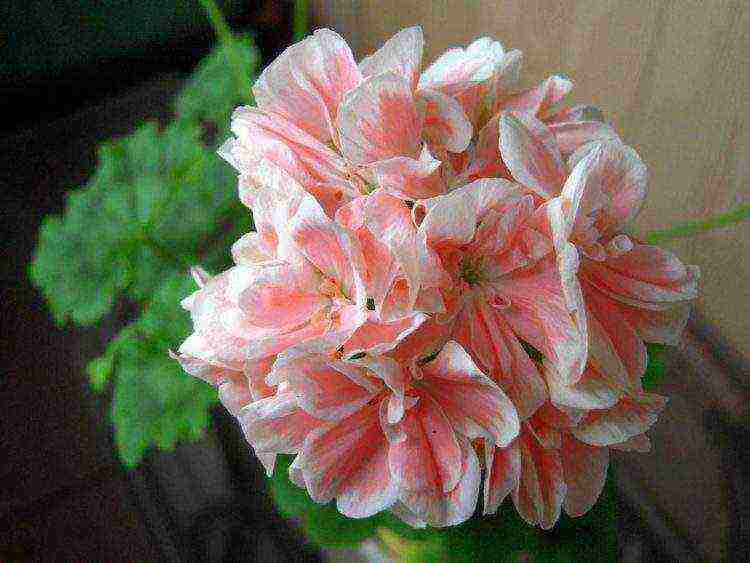
Powder poof
Small zoned pelargonium with salmon color. The lining of the petals is light, and the leaves themselves have a dark zone. A neat fluffy bush. The heat makes the cap turn white and thick, which gives a pleasant contrast. Shoots form quickly. Bright and pleasant to look at. Many buds are almost always present. The plant itself is small, which is why it will look perfect on the windowsill. Spraying is helpful. Take out to the balcony only in hot weather. Dwarf variety.
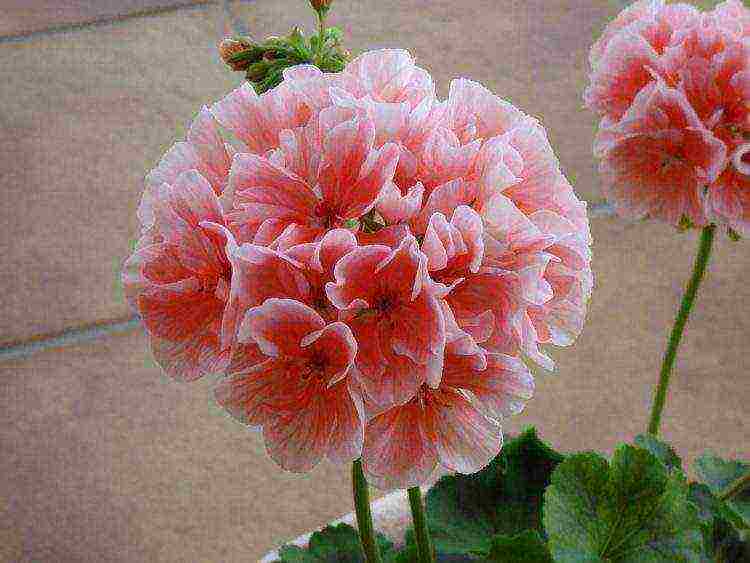
Bornholm
Dense double flower in the form of an unopened rosebud. The petals of this plant are deep red. Each rose is 1 cm. In hot weather, the red color becomes a little paler, and in winter, on the contrary, it acquires a bright shade. The inflorescence is dense. Peduncles of medium height. Green sheets with a cream-colored mosaic pattern. Treat the type of zonal. It blooms in the shape of a cap. Grows to medium size over time.
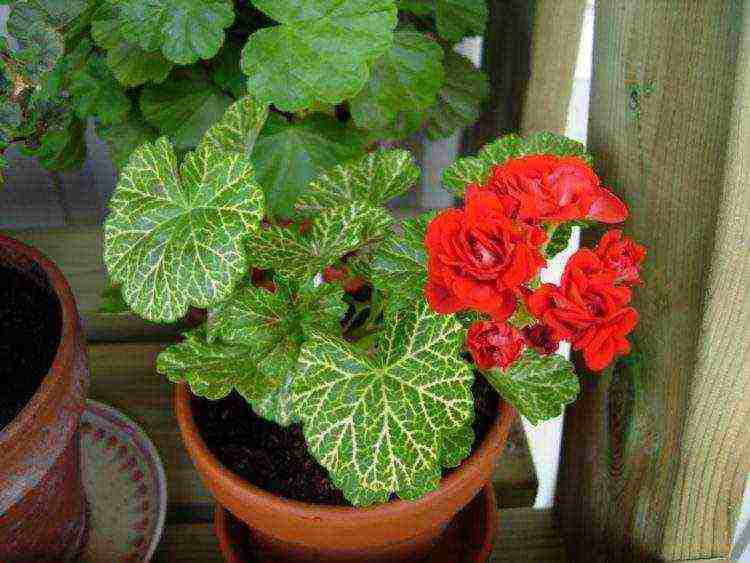
Albina
Pelargonium Albina grows rather quickly. After the emerging cutting, the peduncle rises for 3 days. However, the first bloom is not particularly abundant. 4 flowers grow on 1 peduncle. Large plant. Treat zonal, in terms of growth is considered a dwarf. Leaves are intensely green. The flowers themselves are double, white with a small red stamen, collected tightly. Due to the density of this species, the plant looks collected and neat. He loves feeding, therefore, thanks to courtship, the flowers become larger. Suitable for beginners who take responsibility.
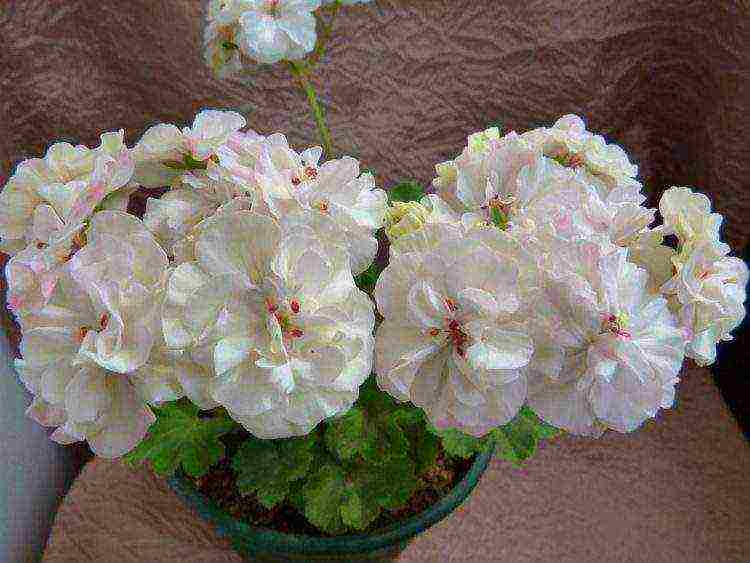
Elmset
Zonal variety of dwarf speckled pelargonium. Florists are attracted by bright, golden-green leaves with creamy double flowers and red veins. The flower is decorated with light bright crimson specks. Long lasting. With a neat shape, it blooms profusely. The bush is plump and strong. Does not throw leaves, bush itself.

Dovepoint
A neat decorative border and a barely noticeable pink color, which echoes with white, distinguish this plant variety from other terry types. The inflorescences are dense and delicate, compared to the dwarf type, voluminous. In the sun, the blossoming of the dovepoint turns from white to pink. Peduncles are short.

Crown Princess Mary
Mary belongs to the terry zonal pelargoniums. The inflorescences are tight, reminiscent of a rose. They grow up to 10 cm. The flowers themselves are white with a slight green in the center. When blooming, it can acquire a slight pinkish tint. The bush is fluffy. It blooms profusely in spring and summer. It should be replanted annually. Loves the sun and warmth. Tries to bloom even in low light. Prefers a complex top dressing. The name of this variety goes well with the name.
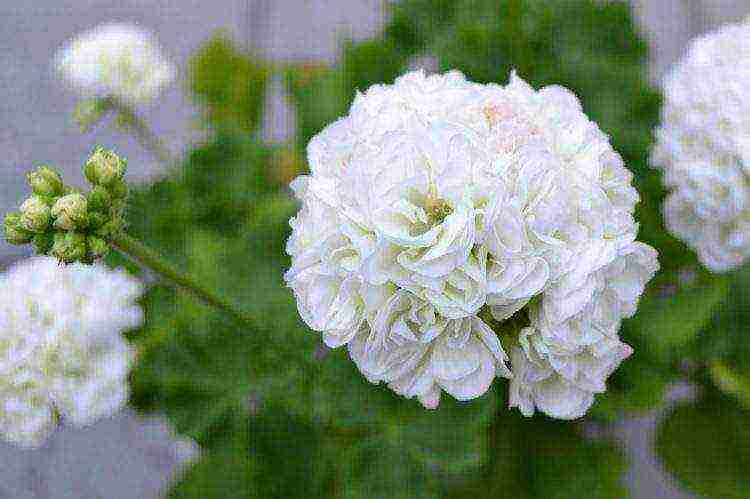
Princess Sandra
Terry pelargonium belongs to the zonal type. The flower is light red with a white section in the center. According to the type of growth, it is considered standard pelargonium, which means that it can grow quite large.
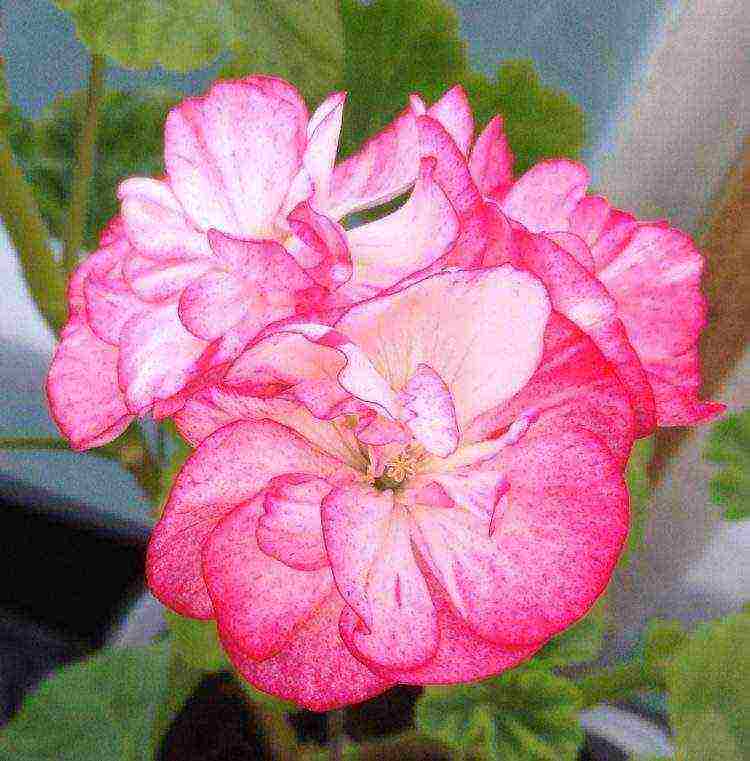
Passat
The double flower of the trade wind strikes with a light pinkish shade of corrugated petals. The density of this variety resembles a delicate fluffy pompom. The species is known among lovers of pelargoniums and beginners. Bushes need help in shaping, but with good care they bloom efficiently and abundantly. A sunny variety that will warm you even in cloudy weather. You can also see how this varietal flower looks in the photo.

Peppermint Twist
Terry pelargonium. Large flowers with a peach-pinkish color, densely covered with cherry specks. The leaves are green with a brown zone in the center of the leaf. They retain their decorative appearance for a long time. Standard bush, blooms profusely. A bright variety for lovers of variegated plants.

Varnish
The wavy petals of pelargonium varnish are colored orange, and towards the edge of the flower they become completely white. The distinctly colored color can only be seen in the sun. In the shade, the brilliance fades. The plant belongs to the usual zonal variety, but in addition it requires careful formation. The leaves are elegant, thanks to the contrasting border of a brownish-green hue.

Bronze butterfly
There is a light butterfly-shaped shade in the center of the leaf., which, basking in the sun, can give a bronze tint. The flower itself is large with a peach color and needle-like shape. The variety is not tall, the peduncles are short. Requires shaping. It bushes and blooms for a long time. He is not afraid of rain and heat. Looks great on the balcony in summer. The size can be easily adjusted using a small flowerpot. Unpretentious, fast-growing. It is the unusual leaves that make this species special.
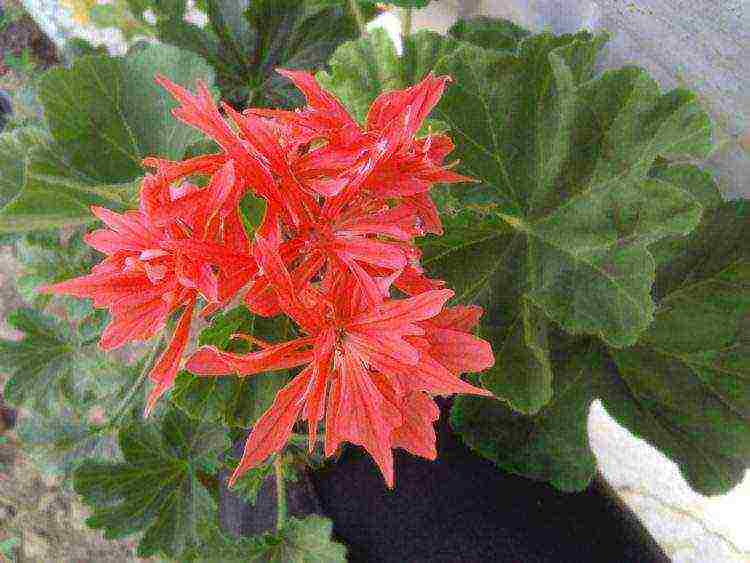
Magnus
Plant of terry zonal pelargonium. Flowers in the form of a red rose shade. The flower itself is bright and velvety. Blooms profusely, looks compact. The hat is round. The leaves are green, shimmer with a slight brown tint. Live it has a very bright colorful color.
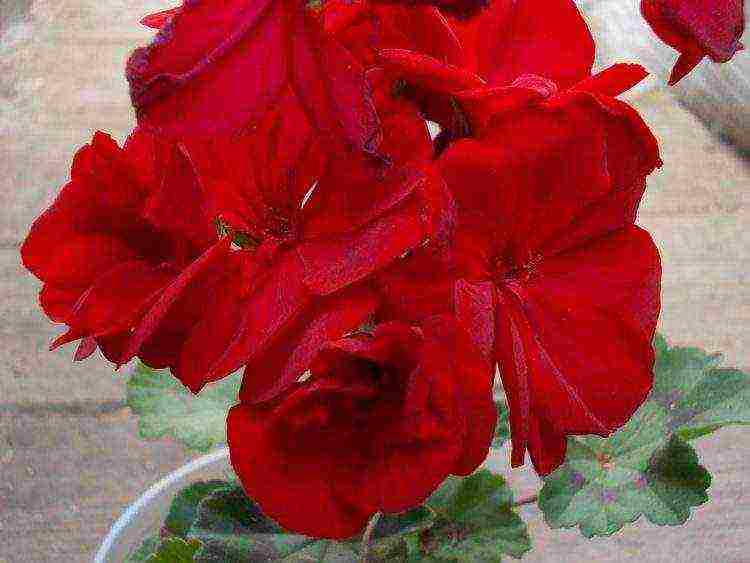
Tsarskaya
In summer, you can see this type of plant in gardens, flower beds and balconies. Differs in lush flowering and grace. Demanding enough to care. Blooms for a short time, about 5 months. But if you see this plant at least once, you will immediately want to bring it to your windowsill. Tsar Pelargonium grows up to 60 cm in height.
It differs from its colleagues in folded multicolored leaves, dense platinum sheet and jagged edges.
On a note. Not everyone succeeds in making such a beauty bloom. This particular person prefers warmth and sunlight for continuous profuse flowering.
It can put up with a small shadow, but it will bloom a little less luxuriantly. The soil prefers nutritious. You can add a little clay mixture to the soil. In cold weather, the temperature should be at least 12 ° C.
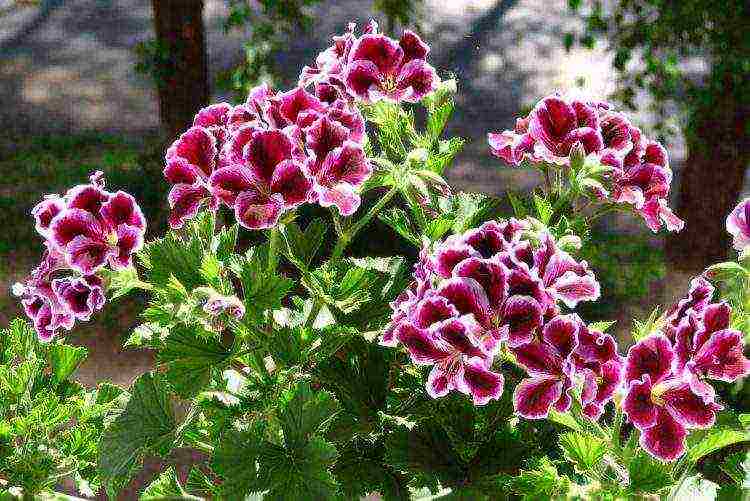
Tamara
Tamara is many-sided and unique. Flowers are like dense pink and white marshmallows. The color is changeable with pink veins and a border of the same color. The plant is gentle and airy. A compact bush with small leaves.It blooms from infancy and never ceases to delight with the process. The petals are neat, with pointed tips.
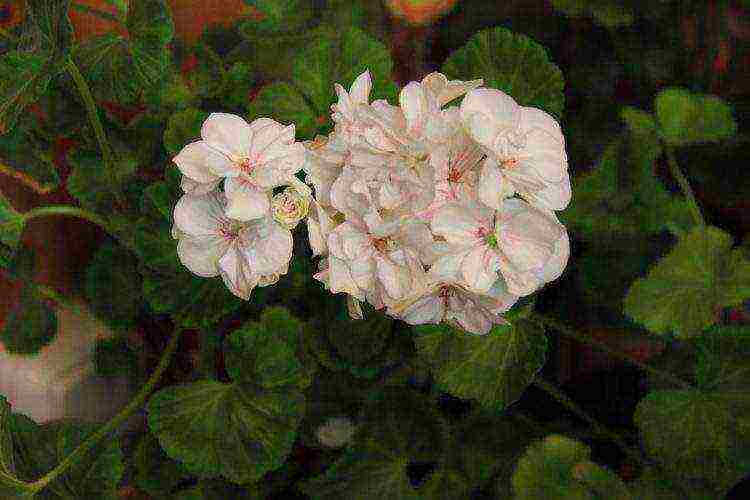
Red
Sunny side required. The soil should be moist at all times, but in moderation. It is recommended to spray. Red pelargonium grows up to 30 cm in length. It should be placed on the balcony immediately after the frost has passed.
Possesses a bright shade and universal resistance to all weather conditions. The variety branches well. There are huge inflorescences. The color of this type of pelargonium is similar to wine red. The leaves are ivy. Growing fast. Landing 30 × 30.

Maverick white-pink
The plant is 30 cm tall with good branching. The color is white-pink. The inflorescences are large. The leaves are green with a slight dark tinge. Drought-resistant. Preference is given to sunny places with fertile soil. You can start planting from the end of January. The seed depth is 0.5 cm. If the temperature is kept to 20 ° C, then the seedlings can be seen in a week.

Tuscany
Pelargonium belongs to non-double, ivy. Large caps and beautifully colored color in various shades. Blooms profusely, completely covered with inflorescences. Currently, there are two popular types of Tuscany.
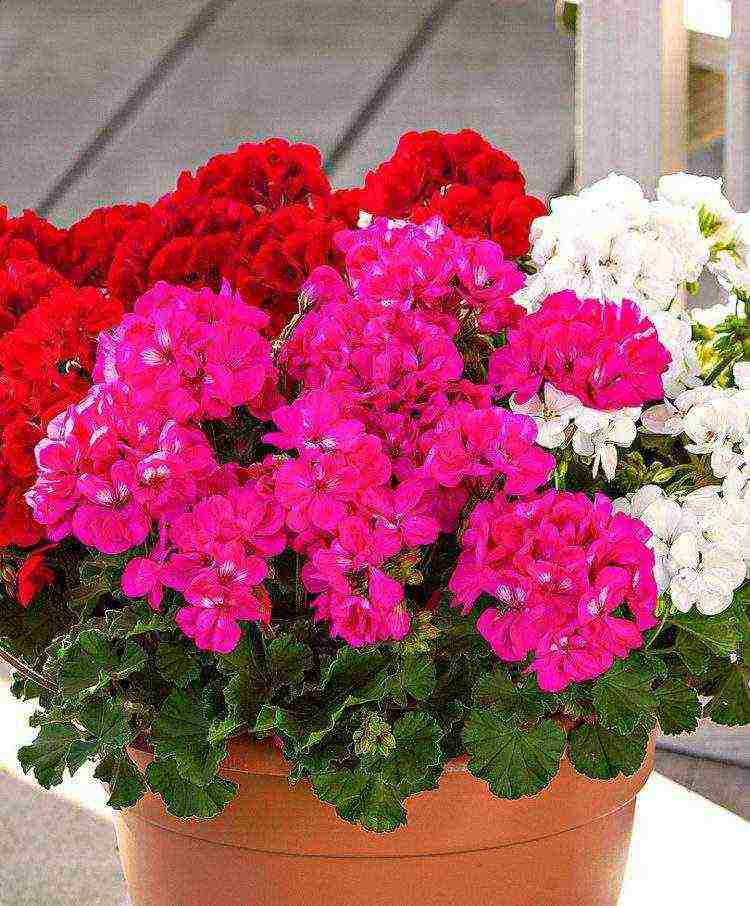
Bernd
Bright flowers, wide opening, deep red color. Each leaf is dark green in color with a bright brown ring. Treat semi-double. The bush is harmonious, it never stretches. The lower part of the flower must be tamped tightly.
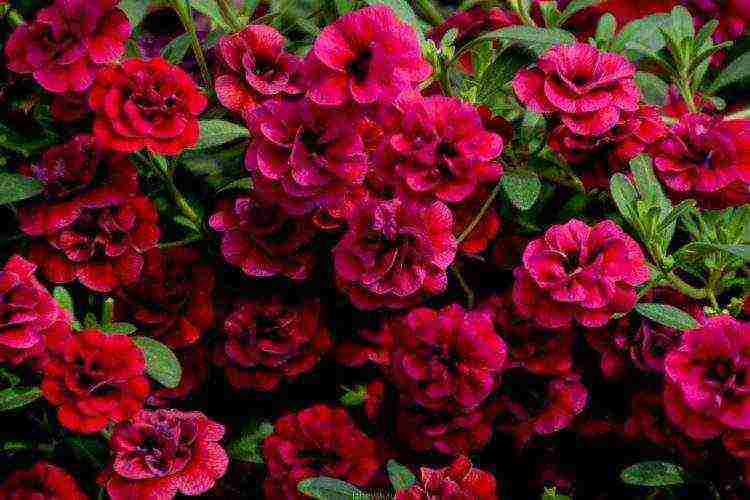
Hero
Large crimson-red flowers with white dots on the leaves. The bush is fluffy. It grows slowly, but very good branching. The leaves are medium-sized, painted in dark green. The bush is not tall, the average height is up to 25 cm. The color is very rich. Does not require growth regulators.
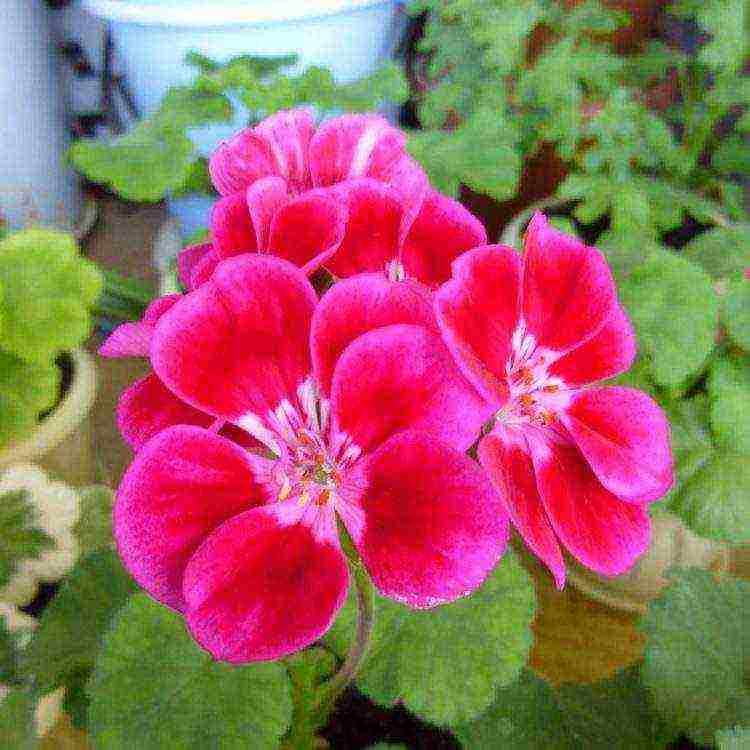
Apple blossom
A herbaceous plant with a fragrant aroma. The height of the bush is 25 cm. The leaves are round, green with a small red edging. The flowers are pink in color with a slight pallor in the form of a spherical inflorescence. The plant prefers light. For feeding, choose a sod mixture, and prefer moderate moisture. If you treat a flower with love, then flowering will continue all summer. In the fall, a transplant and a bright place in the room are needed. For seed germination, the temperature must reach 20 ° C.
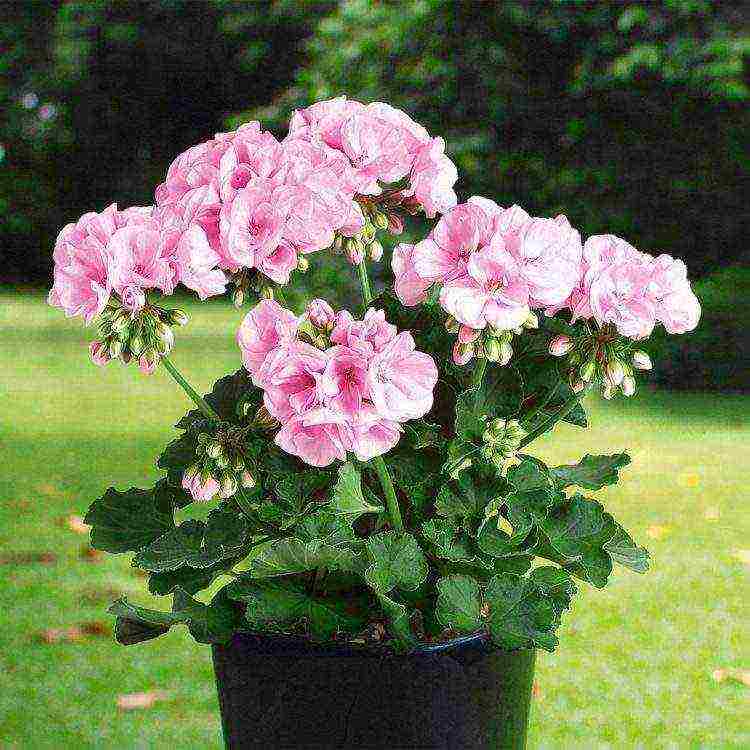
Black velvet
The difference between black velvet is in unusual chocolate sheets, which create an excellent combination with bright red inflorescences. If the bush is formed recently, then you can notice that at the initial stage there is a bronze dusting on the sheets. The height of black velvet reaches about 40 cm. The shoots are strong. Loves light, but the sun's rays should not touch the petals.
Pelargonium is unpretentious, but this does not mean that she does not need care. You need to check the soil periodically and water it on time. Prefers mineral fertilizers. Sowing 1 cm. It is not recommended to allow the soil to dry out.

Indoor hybrids
The hybrid variety grows well at home. It looks like a large shrub up to 75 cm in height. Rounded green leaves. Umbrella-shaped flowers up to 3 cm, there are multi-colored shades, namely: white, pink, red, purple. Flowering lasts six months.
The most popular Pelargonium hybrids are two.
Ardens
A rare hybrid plant. A flower with the color of wine red, with a black stripe in the middle. This hybrid plant is easy to care for, but demanding on light. Moderate watering is required. An adult plant reaches a height of 20 cm.

Miss Stapleton
The plant never sleeps. This heart-shaped hybrid looks like a bouquet of pink roses. Stems are firm with stipules in the form of thorns.
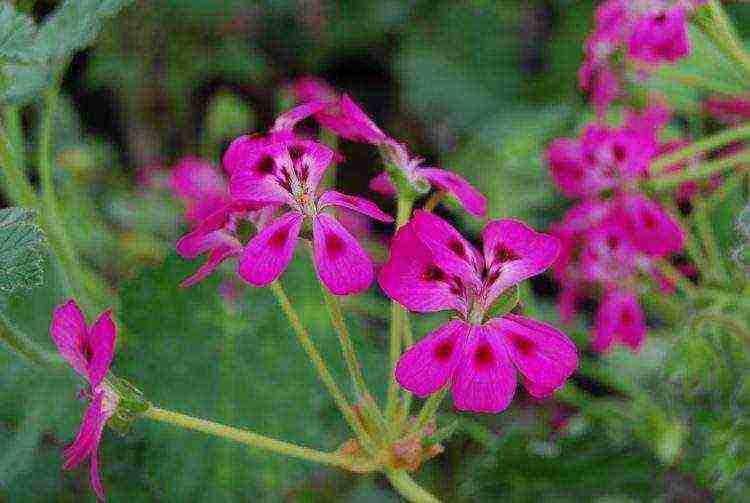
Scarlet
Rosaceous pelargonium. Flowers are dense, double. The petals are of two colors. The inside looks like red wine and the inside is silvery. The inflorescences are dense. Leaves are greenish, folded.
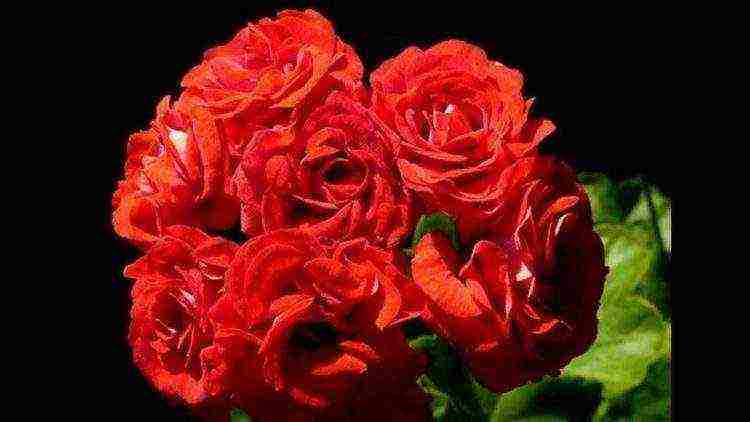
Madam
Madame Pelargonium has several varieties.Let's consider the main ones.
Bovary
Type of terry zonal pelargonium. Fluffy bush. Blooms profusely. The flowers are like dark red wine, there are bright and large inflorescences. Keep the soil moist and spray as often as possible.
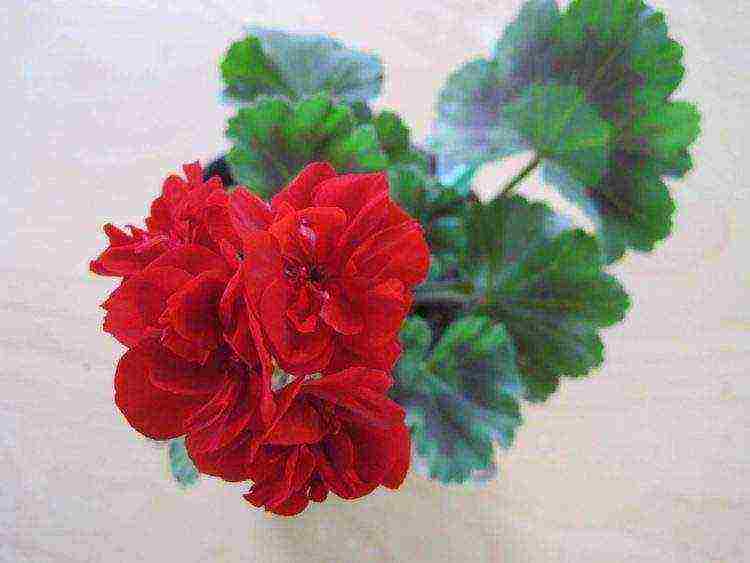
Seleron
Graceful pelargonium with variegated leaves. Leaves with long stalks, gray-green with a wide creamy edging. Has thin cuttings. Treat a dwarf group. It blooms in a bright pinkish color. The variety almost does not bloom, but captivates with its beauty. The bush is compact and pleasant to look at.
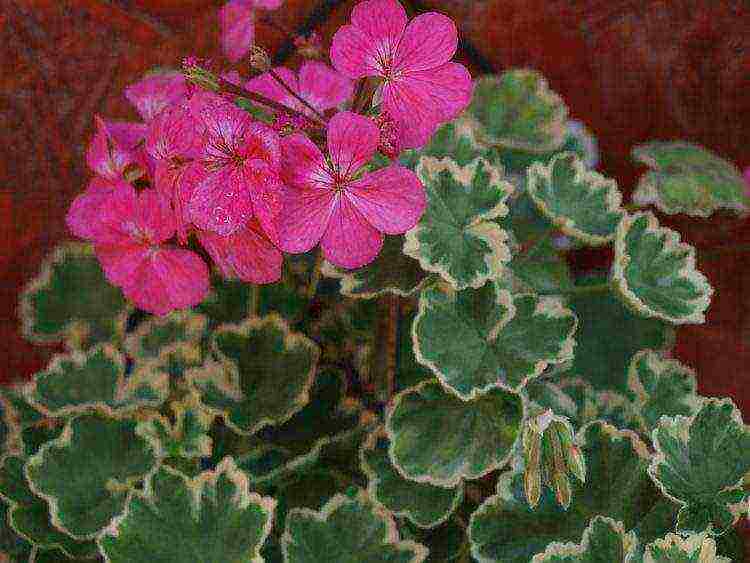
Fisher Apleblossom
Large flowers resembling a rose. The plant is white, with a rich white-pink border. Tight hats. The bush needs shaping. The leaves are green and have a dark area. Requires special care.
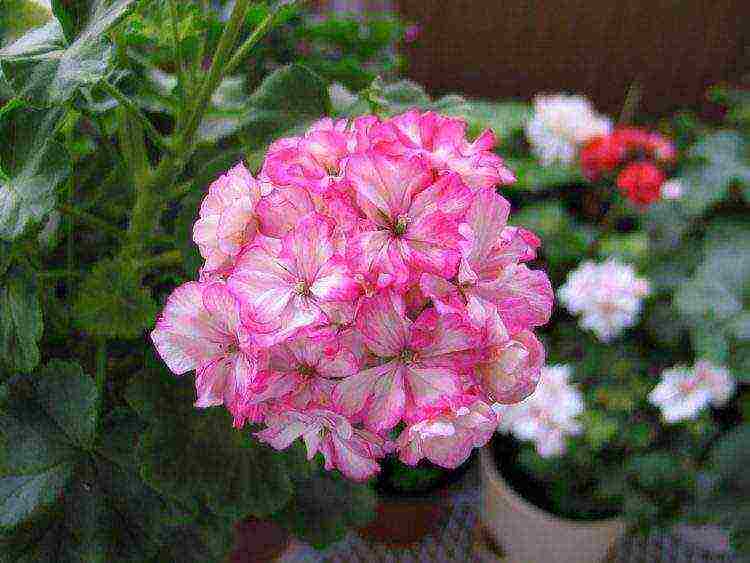
Blue
Terry ivy pelargonium. The flowers are similar to a blue-lilac shade. Compact bush. Needs a sunny area. Requires daily care. The plant needs additional minerals.
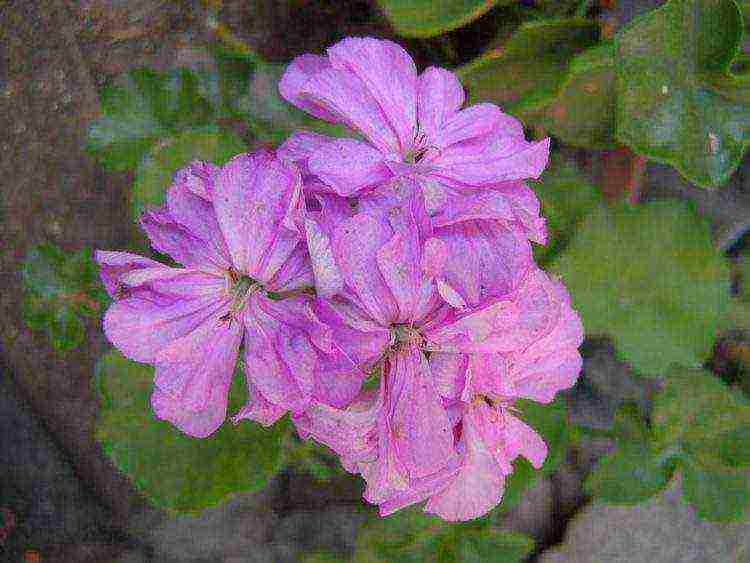
Miniature varieties
For the first time, miniature pelargoniums appeared in England. The height of small pelargonium starts at 8 cm and ends at 15 cm. Ideal for home use, they can also be placed on balcony boxes. Leaves come in multi-colored green hues. Pelargoniums are light and airy, but this is not their only advantage. They are compact. They can bloom in any decade.
Small plant species are currently classified into groups:
- Zonal.
- Ivy.
- Royal.
- Variegated.
- Succulent.
- Fragrant.
Most of the plants belong to the zonal species. The name was derived from the small areas on each sheet. Usually these are areas of dark brown color, which are located in the center. It was thanks to breeders from England that small varieties of pelargoniums appeared.
Reference. Do not leave pelargonium varieties in cold places. Most species need a standard temperature of 15 ° C.
Stanley Stringer is among the most worthy breeders. He was born in a small village called Okkold. He started breeding at the age of 50. The most popular cultivated variety remains Aldé, which can still be seen on the shelves today. Diverse
Deacons are also stringer dwarf varieties. Among them, the best are: tangerine and moonlight. The flowers in the mandarin are orange-red, and in the moonlight they are white and purple. The most impressive thing is that such a miniature plant has very large flowers.
One of his last cultivations, is a golden goblet that had a creamy hue, and the petals were strewn with red dots. Stringer left behind about 160 varieties of pelargonium.
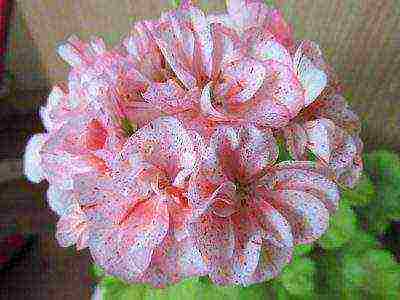 Paradise Bitwell began life as a postman. Therefore, it has a number of geographical variety names. Bitwell became famous for the fact that he managed to bring a new kind of polka dot variety. And they were covered with red, pink and purple specks.
Paradise Bitwell began life as a postman. Therefore, it has a number of geographical variety names. Bitwell became famous for the fact that he managed to bring a new kind of polka dot variety. And they were covered with red, pink and purple specks.
Among the varieties with small spots, the most popular are Milden, Semer and Elmsett. Milden has green-yellow leaves with bright white flowers covered with pale pinkish specks. Semer is a dwarf species of pink flowers with red dots. Elmsett is a zoned look of pale pink flowers with red dots. The latter species was named after Bidwell. The variety is decorated in a wine color with green-red foliage.
And last but not least, the famous breeder Brian West. West is known for producing a variety with leaves that resemble stars, which is why the variety is called star-shaped. The varieties have spread all over the world. Even despite the unusual shape and the fact that they do not quite resemble pelargoniums, you can take care of them in the same way as for ordinary varieties.
In recent years, Vesta has given birth to miniature plants up to 8 cm. The varieties were named anni popham.
Care rules
Plants require special care and pelargonium is no exception. Usually the flower is in the room, and begins to bloom profusely in the summer.In winter, it is necessary to maintain a temperature of at least 15 ° C and avoid waterlogging of the soil. The plant is best left on the sunny side, but only where there are no drafts.
Pruning is carried out after flowering - in the fall. But if the roots have grown well, they make an exception. The transplant is recommended in February. For pruning, you need to leave shoots about 10 cm. Do not forget about feeding for each flower.
Plants can lose their compactness if not properly cared for.
On a note. It is best to get new specimens from cuttings that have not yet faded. Each stem should have about 5 leaves.
After pruning, the cuttings should be left in a dry room with fresh air for 2 hours. After pruning, cover them with plastic bags to help them take root. For the growth of pelargonium, a temperature of at least 20 ° C is needed.
Besides beauty, Pelargoniums also have medicinal qualities for humans. After all, they contain an extract that heals respiratory tract infections. In addition, the oil of this plant has a calming effect. But the main thing is that the flower goes well with any landscape in the house and allows every housewife to feel like a woman.
Varieties of geranium (pelargonium) - varieties and types
Indoor Geranium or pelargoniumhouseplant known to many. Nowadays, it is withdrawn many different types and varieties, there are already more than 400 of them all over the world. Deduce new varieties of indoor geranium began a long time ago, probably, as soon as they got to England, botanists immediately began to breed new species and subspecies, already in the 17th century there were quite a few breeding varieties of geraniums. The most popular varieties can be found on the shelves of flower shops and the windowsills of the houses of your relatives and friends.
Pelargonium, with its unpretentiousness, has won the hearts of many flower lovers. The main advantage of room geraniums is the fact that the same plant is grown equally well both indoors and outdoors, and at the same time the breeding conditions themselves do not differ, which makes its breeding and cultivation rather troublesome. If you still do not know the name of a variety of room geranium on your windowsill or table, read the description of the varieties and you will find out what the name of your beauty is.
Indoor Geranium (Pelargonium) Zonal
Zonal geranium (pelargonium)
Zoned geranium (pelargonium) - the most popular variety, every lover of this plant has such a geranium. This type of geranium has a large number of varieties, but each variety of this species is distinguished by a special splendor of the plant and very abundant flowering.
The trunk of all varieties is even, and the leaves are always corrugated, have different edging around the edges, the foliage is always lowered to the bottom and has a peculiar aroma. Her flowers are very diverse, they are ordinary, double, semi-double, each flower has from 5 to 8 petals. The flowers of the zonal geranium are very diverse in shape, some simply fascinate with their beauty, and they are like this:
Geranium (pelargonium) Tulip
Tulip - in shape, these flowers are similar to nothing more than a half-opened tulip bud, in the inflorescence it resembles a bouquet of tulips that are about to open. The colors are absolutely varied.
Rosebuds
Rosebuds - already the name itself, immediately reminds of roses, it is on them that they look like, such a flower looks like a not yet fully opened rosebud. They are only pink or red in color.
Cactus or clove geranium
Cactus - resemble a cactus or chrysanthemum flower, they always have narrow petals, and the color is only red.
Star-shaped - the name speaks for itself, they resemble small stars in their shape.
Geranium (pelargonium) star-shaped
Format (star) - in shape, the flowers themselves are, as it were, star-shaped, similar to asterisks, but the foliage is also different here, it is cut into 5 parts.
Deacons - have the smallest flowers, inflorescences can be pink, red, purple, while these colors have different shades.
Geranium (Pelargonium) Deacons or Bird Eggs
The colors of the petals of flowers of this species are very diverse, in their color, there are even mixed colors, with stripes or blotches. There is even a color that was given the name "Bird eggs" they were named so due to the fact that the blotches are in the form of the color of a bird's egg. Zonal geranium blooms all year round and is quite abundant.
Zonal geraniums differ among themselves not only in the shape and color of flowers, but also in their size they are microminiature, such a variety reaches a maximum of 14 cm in height, they are dwarf a little more from 14 to 25 cm in height, ordinary from 25 to 70 cm and the most large it Irene they always grow up to 70 cm.
This species also differs in its leaves, they are always bordered, the border can be brownish, reddish, white, bluish or burgundy. The center of the leaf is also always pronounced, it can be varied, the most unusual are black and silver colors of the center of the leaf. Even tricolor leaves can sometimes be found.
Royal geranium (pelargonium)
Royal geranium (pelargonium)
Royal geranium named the most beautiful representative among geraniums, and its flowers are the largest among all. The flowers of this beauty can be pink, white, purple, red and burgundy, and the size of the inflorescence is large 16 cm in diameter, making this bouquet simply luxurious.
Flowers are regular and double, the edges are always wavy. Flowers almost always have streaks or dark spots. The highlight of this variety are the flower petals, to be more precise, the 2 petals on the flower - they are always larger than the others and are more double and velvety.
The leaves of this variety are very similar to those of clover. They can be pale and rich in color.
The size of the royal geranium is quite small, it grows up to a maximum of 15 cm in height.
This variety, unlike the others, is very whimsical like a real queen, she is picky in everything. And it blooms less than all the others, the flowering period does not exceed 4 months and it blooms no earlier than 2 years later and only if the conditions are completely suitable for it.
This variety does not like to live on the windowsill in the summer, it is better to identify it in the fresh air in the summer, but it does not need to be planted in open ground, this will create stress for it, and it will start to hurt, you just need to take the pot outside. You can put it on the balcony if you live in an apartment. While it is on the street, be attentive to the weather, the herae does not like rain, in no case leave it in the rain, heavy rain can completely destroy the plant.
Scented geranium (pelargonium)
Geranium (Pelargonium) Fragrant
Fragrant geranium it is named for a reason, this variety is indeed very fragrant, has a very bright aroma. If you touch its leaves, it will simply surround you with its scent. In this aroma, you can clearly catch notes of mint, ginger, lemon, a little rose and even strawberry, this variety has such a unique aroma.
Nowadays, thanks to the efforts of botanists, unique hybrids of this variety have already been bred, which exude aromas of apples, anise, pine and even, which is difficult to imagine, the aroma of kiwi.
The flowers of this variety are not at all large, they are only purple and pink in color. They have different forms, there is no exact description of the forms.
The leaves are divided into 5-7 parts and they are always terry.
Geranium (Pelargonium) Angel
Geranium (Pelargonium) Angel
Angel - this variety stands out from the rest for its unusual flowers, they look like "Pansies". They also have dark spots or stripes on the top two petals, which is quite unusual for geraniums.These unique flowers come in pink, white and purple tones, and the shades can be varied.
This variety grows not large and not small, its growth reaches 35 cm in height. She has very beautiful branching, especially with proper pruning, the bush looks very aesthetically pleasing thanks to the lush branches that look simply luxurious.
Ivy Geranium (Pelargonium)
Geranium (pelargonium) Ivy
Ivy geranium was bred by botanists by crossing. She is an ampelous plant. The leaves of this geranium are similar to ivy leaves, which, in general, gave the plant its name. Such geranium is intended for growing in hanging flowerpots, it is used to decorate loggias and balconies, it looks simply gorgeous, especially during the flowering period.
This is the only representative of the species that is rarely grown in rooms, it was created to grow in outdoor conditions and it blooms, respectively, exclusively in the warm season, starting in May and ending around the end of September, it all depends on weather conditions.
It is necessary to plant geraniums in a bright place, it does not tolerate constant shade, but constantly falling sunlight is also destructive for it, so the place should be chosen so that the sun's rays hit the geranium only some part of the day.
The plant is watered just like everyone else, watering is needed moderate. During the rest period, watering is reduced, the soil is not watered abundantly, it will simply need to be moistened.
Flowers in ivy geraniums can be either simple or chicly terry like no others. The size of the flower is quite large, it reaches 5 cm in diameter, one flower, and their inflorescences can be up to 15 pieces. The color of flowers is very diverse, they come in different shades and range from white to black and blue. Blossoms, blotches, stripes and edging are very common on flowers. If you plant such geraniums of various colors in one pot, the effect is simply amazing.
This geranium is not small, the length of the branches can reach 1 meter in length, respectively, it is necessary to plant this variety of geranium in flowerpots suspended at a level of at least 1.5 meters from the ground.
For the winter, the geranium plant is brought into the room, but it does not fit into warm, light rooms, for the winter it must be placed in a cool place with low lighting, such a place can be, for example, a warmed corridor of a house where frost does not reach.
Pruning of this variety is carried out only at the end of winter, it is best to do this in March.
Cuttings for propagation in winter are not grown, because for a plant this is a dormant period and cuttings root very poorly. It is best to do this during pruning, that is, in early spring.
Geranium (pelargonium) Unicum
Geranium (pelargonium) Unicum
Geranium varieties unique rather tall, mature plants reach 50 cm in height. This group of varieties began to be bred back in 1870. Unicums are the easiest to care for and grow well outdoors in the open field.
The unique ones always bloom very profusely, the flowers have a varied color, they are simple and double. The color of the flowers is varied and different; flowers with dark spots and stripes are not uncommon. The flowers themselves are similar in shape to the Royal Geranium flowers, but their size is much smaller and the inflorescences themselves are not so lush. The foliage is always heavily dissected and has a very rich color and a spicy aroma that spreads after touching the leaves.
Geranium (pelargonium) succulent
Geranium (Pelargonium) Succulent
Succulent geranium named so because it is a variety obtained by crossing with succulents and it has received many of the characteristics of this plant genus.
The trunk of this species from below is always stiff, sometimes they are branchy, and there are also representatives who are more reminiscent of such an elongated root crop that has grown on the surface, which has already dried up and stiffened, and suddenly suddenly revived and released a deciduous forelock from above. These geraniums are great for decorating various bonsai. They fit perfectly into various decor of rooms that need to be decorated in a specific style.
Succulent geranium is difficult to even determine by eye that it is a geranium, but the scent of the leaves will always give it away.The appearance of the face is very unusual and it is not immediately clear whether a dwarf baobab is growing in the pot, or whether it is some kind of mythical creature that has climbed into the pot. This uniqueness and originality is the highlight that makes it absolutely unlike any plant of its kind.
There are varieties of succulent geraniums, the branches of which are covered with small thorns.
In leaving, geranium is not whimsical. Watering also requires moderate, but if you forget about watering for a long time, then from drying out it can completely shed its leaves. It will be enough to restore the water balance of the soil and new leaves will surely appear again.
When planting, this variety requires well-drained soil and good drainage at the bottom of the pot.
Lemon Geranium (Pelargonium)
Geranium (Pelargonium) Lemon
Lemon Geranium the largest representative of its kind, it is a real giant among geraniums, its height can reach up to 1.5 meters in height. It was named Lemon because of the peculiar aroma that the leaves exude, it is very similar to the scent of lemon.
She is not whimsical in care, like most geraniums. It blooms only in summer, in winter it has a dormant period. Great for outdoor cultivation. A distinctive feature of this variety, its leaves, they have a rich green color and are strongly dissected into 5-7 parts, the leaves of this variety are always lowered down. From a distance, its leaves resemble green snowflakes and look very impressive. This geranium does not tolerate being near heat sources, for example, it cannot be placed near radiators or a stove.
Watering is also moderate and no spraying indoors. In winter, the amount of watering is reduced, provided that it does not bloom.
Regardless of the variety, your geranium will always delight you with its beauty with proper care. Decide on the variety that you would like to see in your home and grow this beauty in your home without difficulty.
You can find out more about growing geraniums and caring for it in the articleGeranium (Pelargonium). Growing and Caring for Home and Outdoors. "
Post Views: 155
